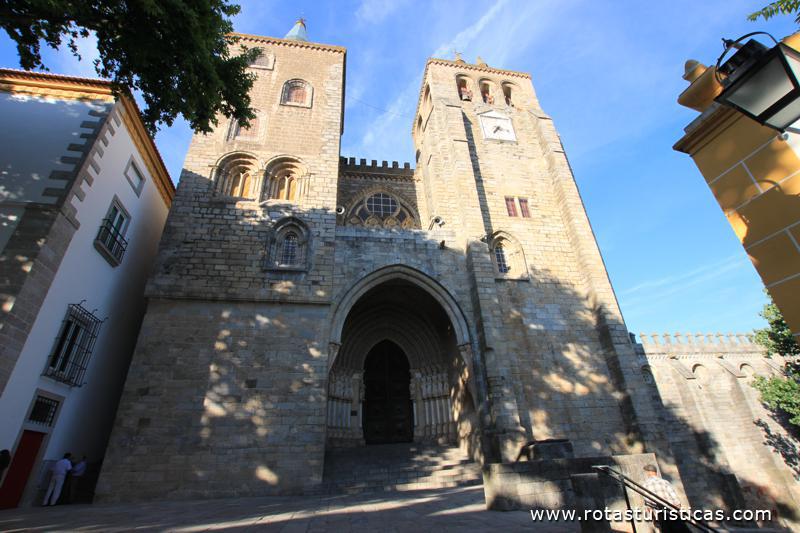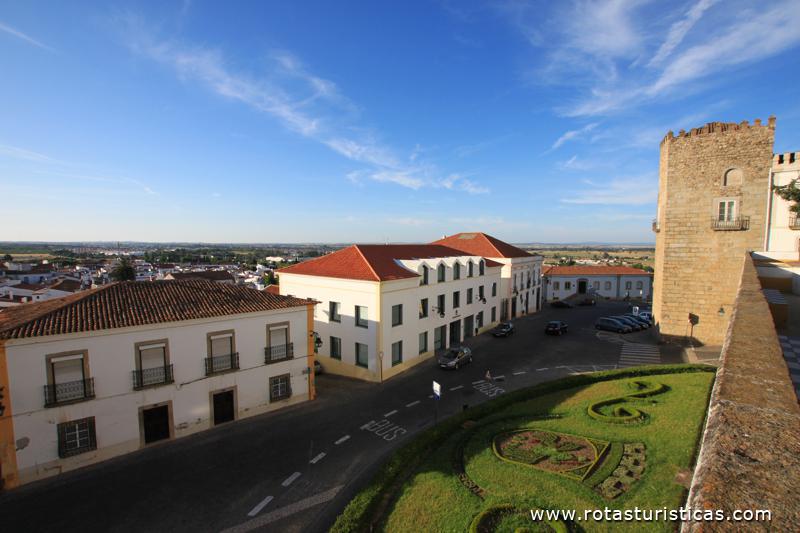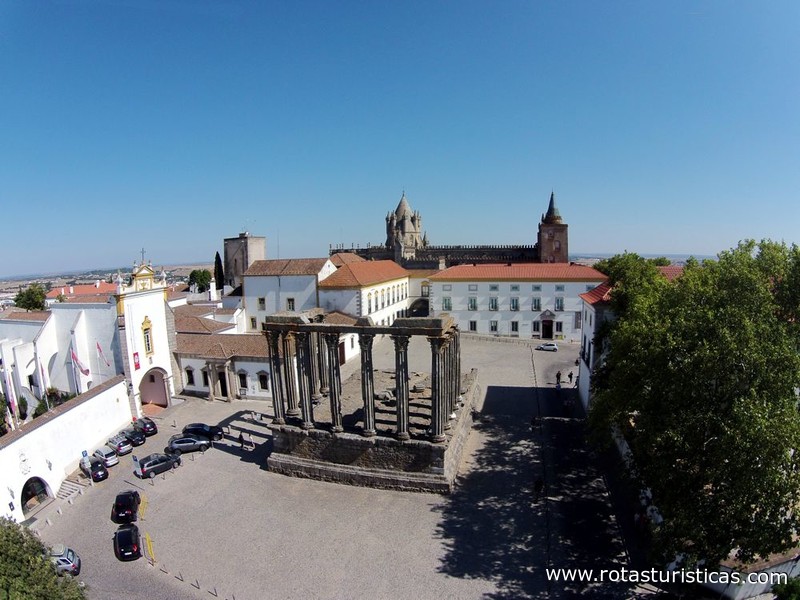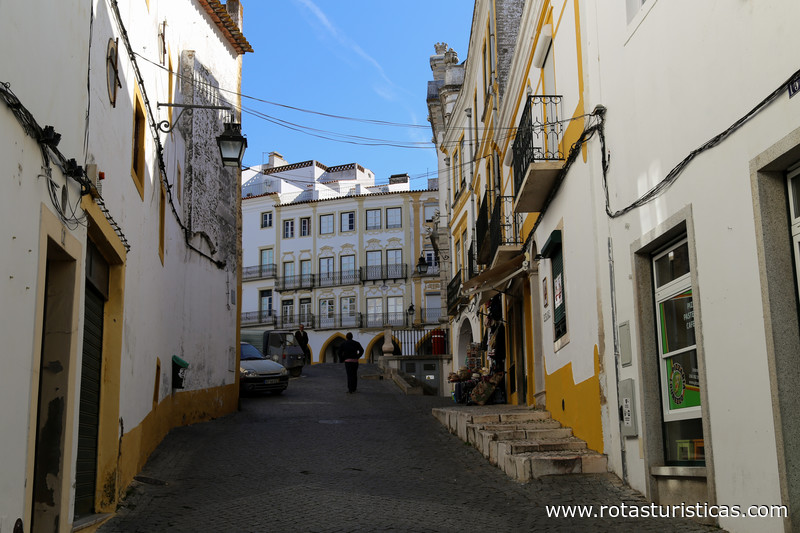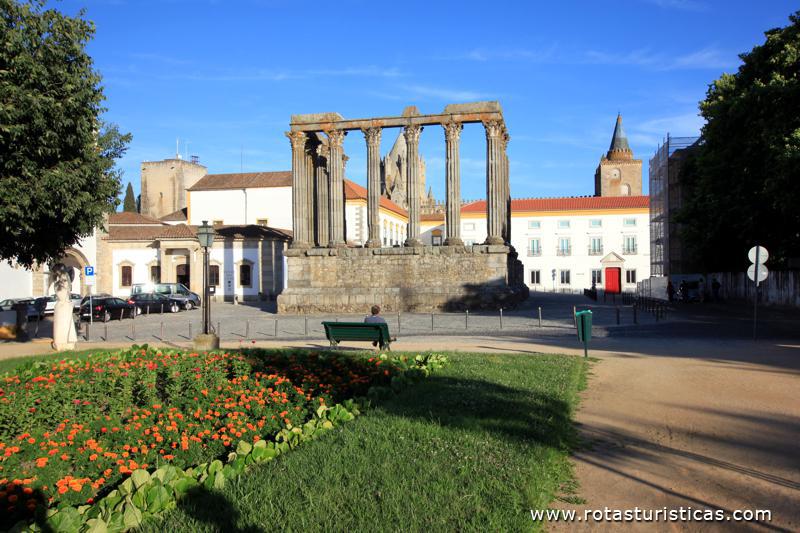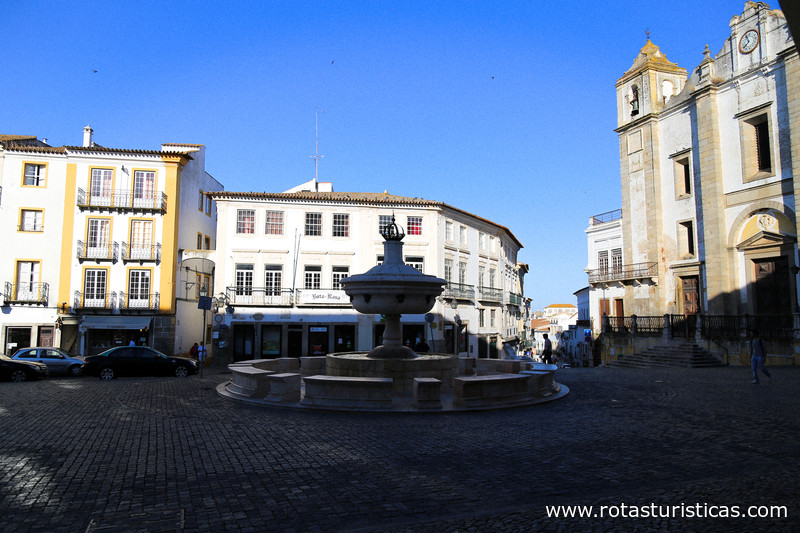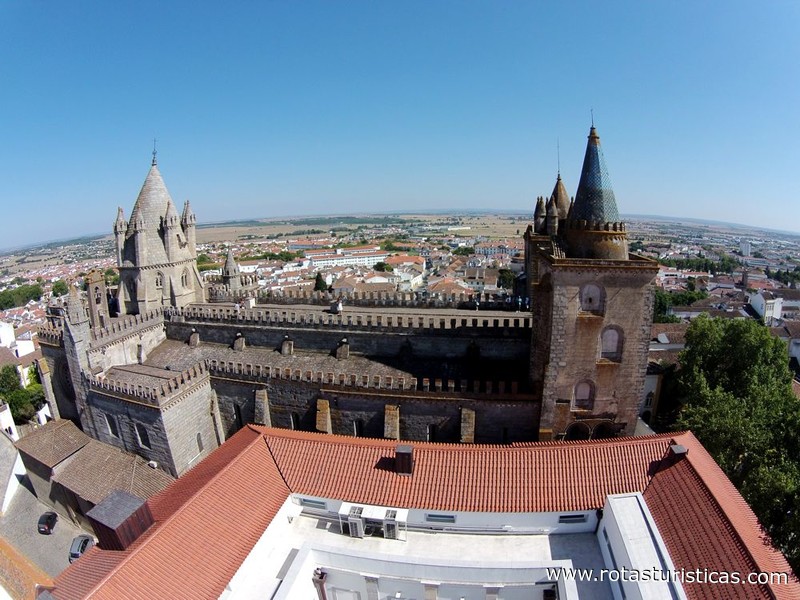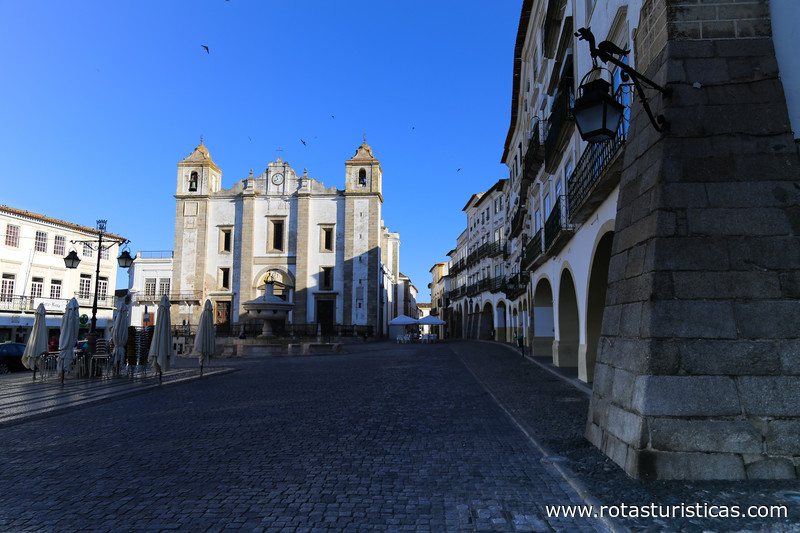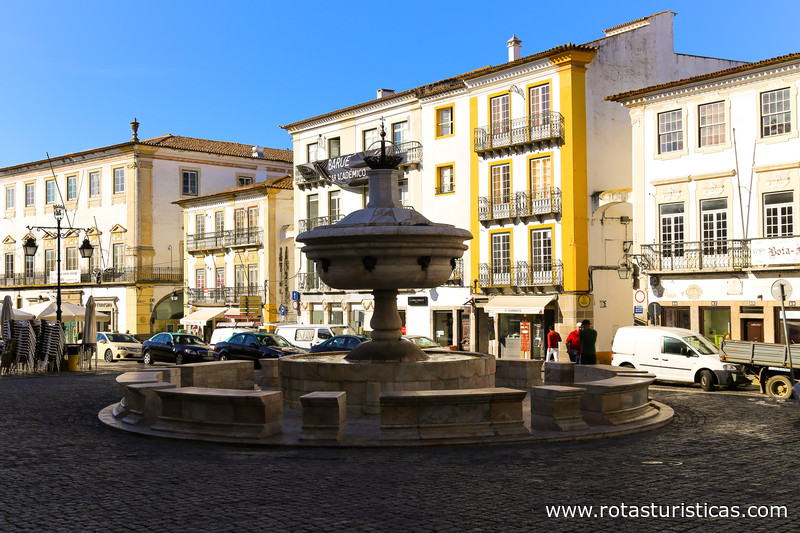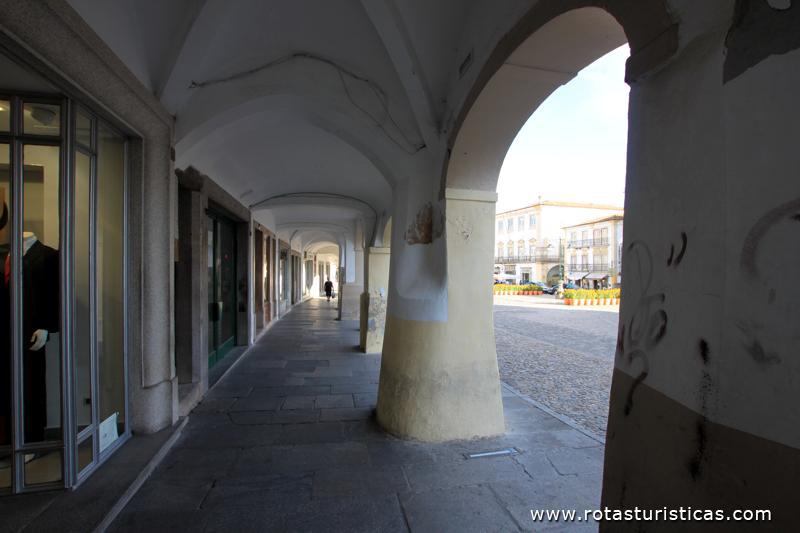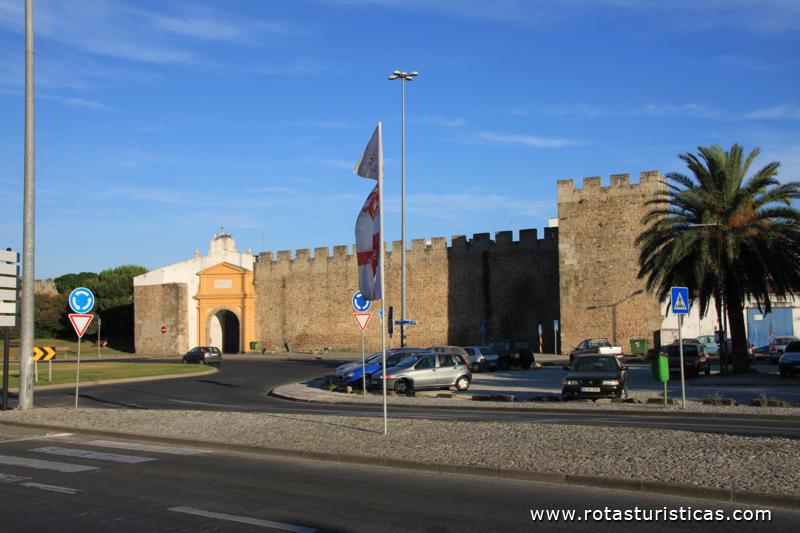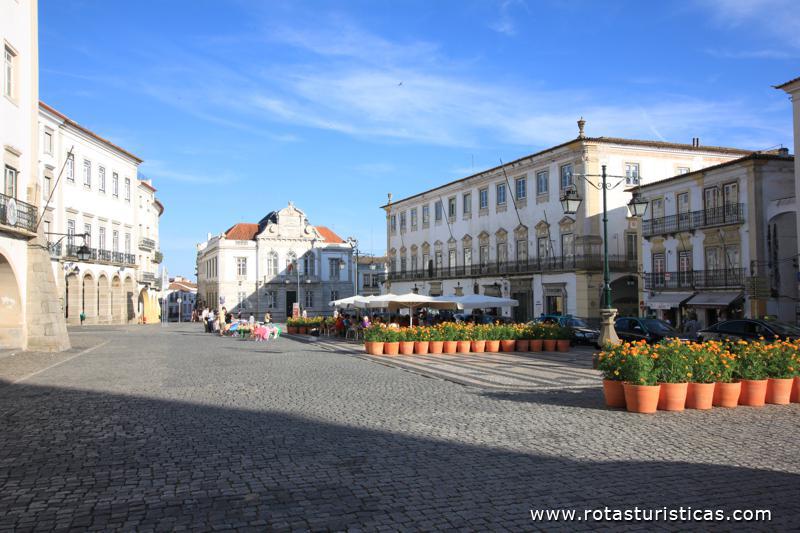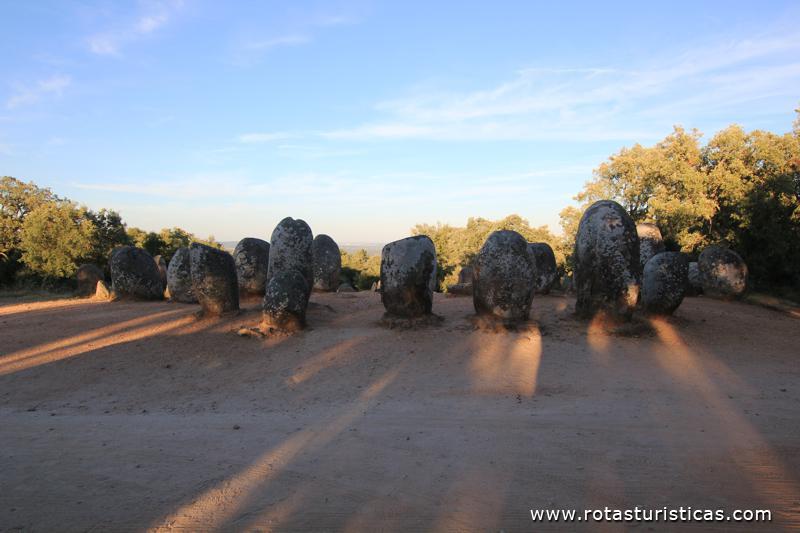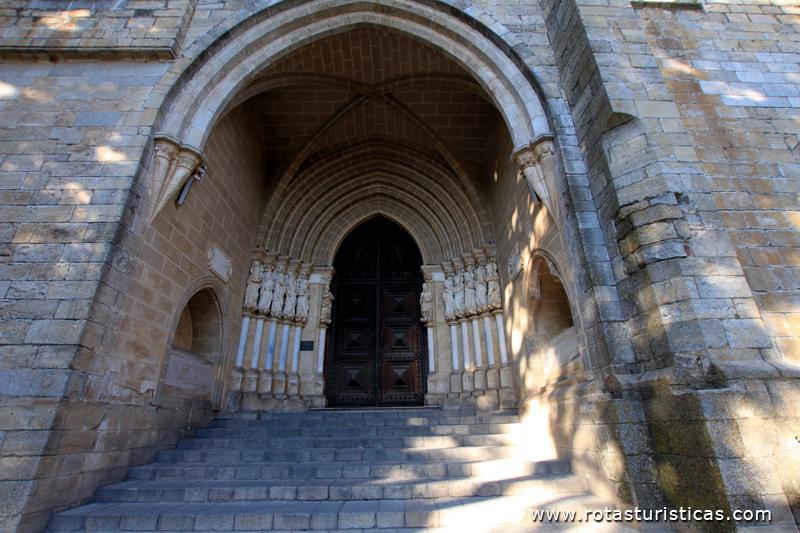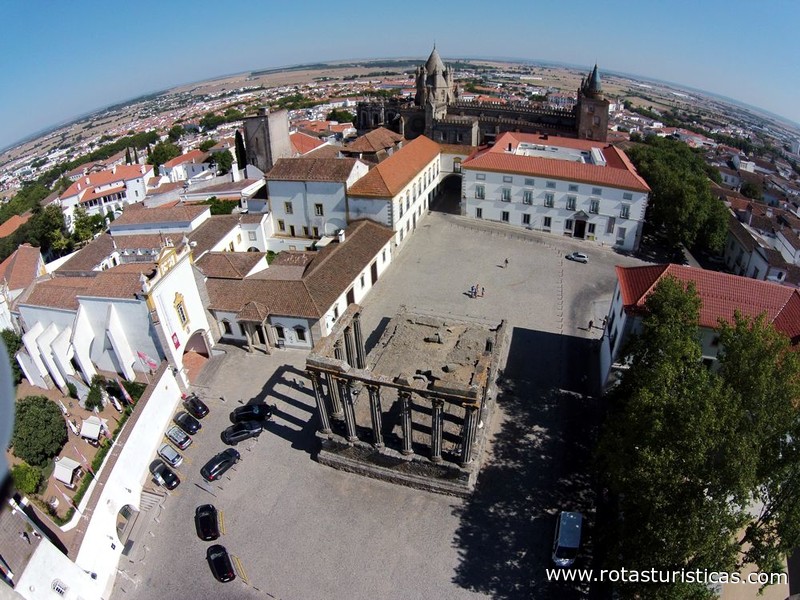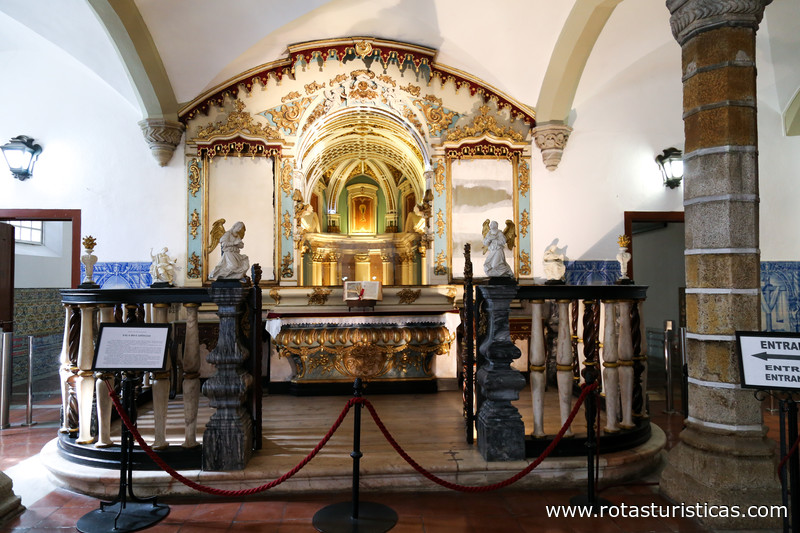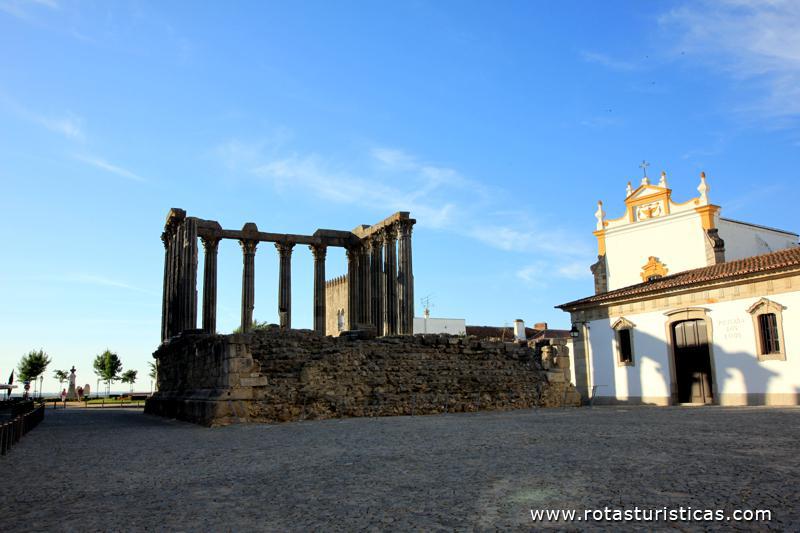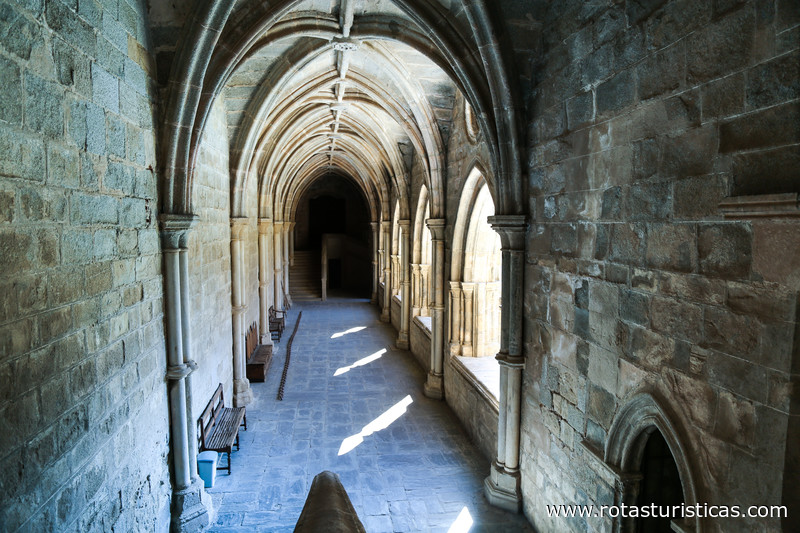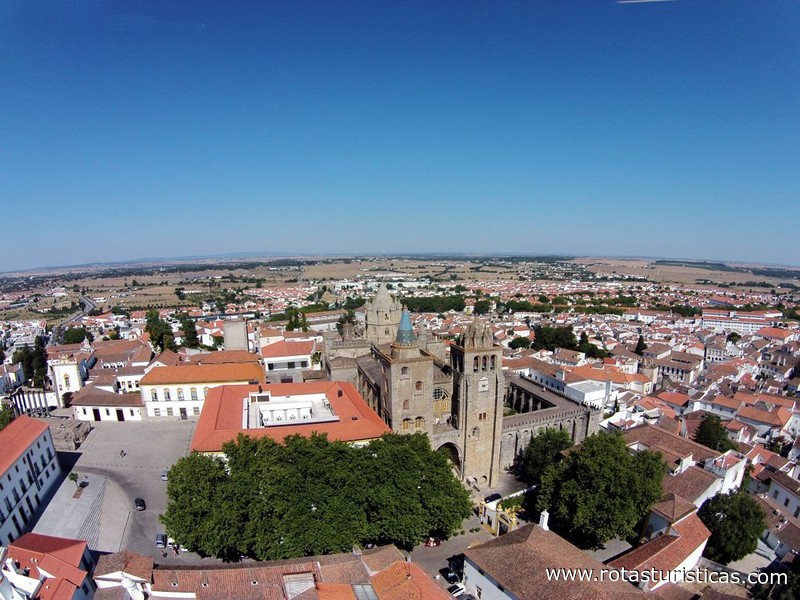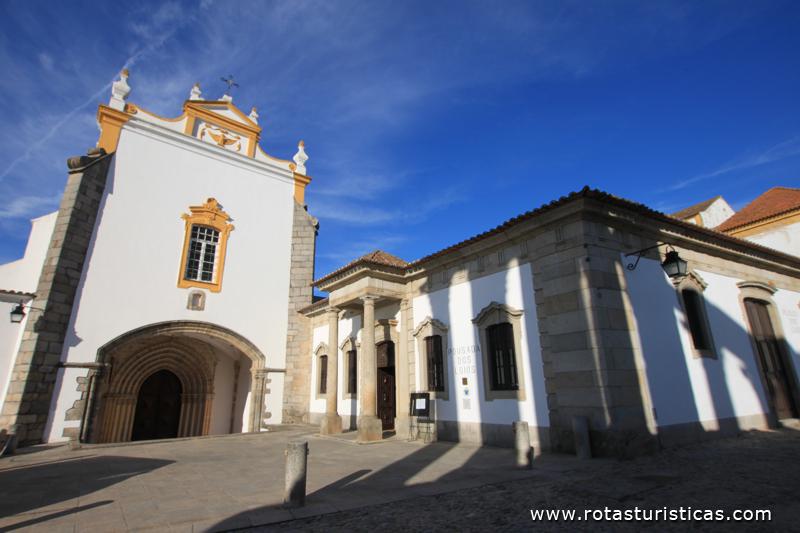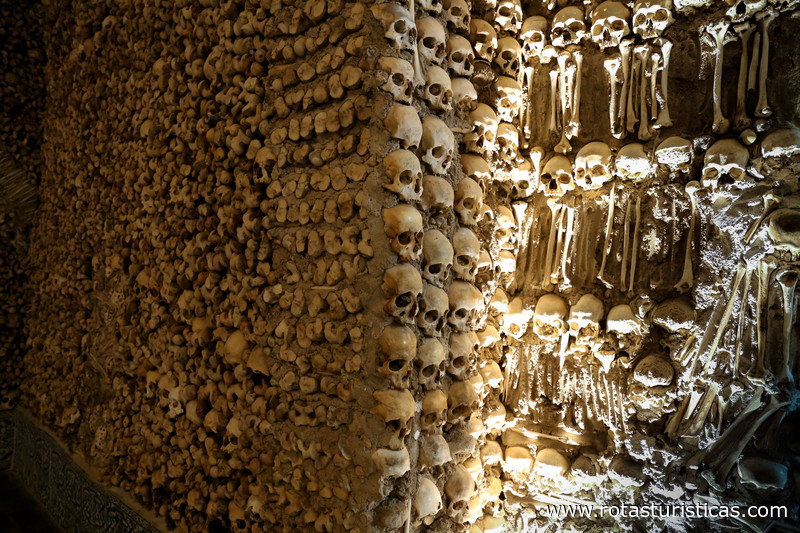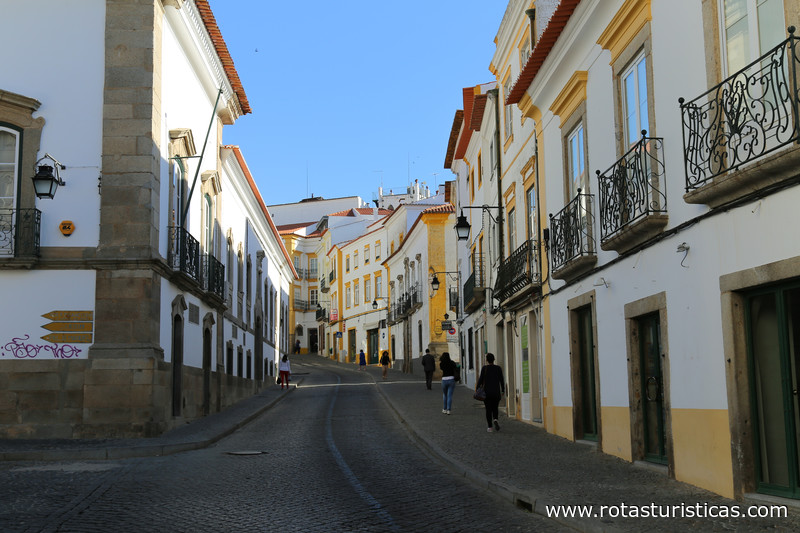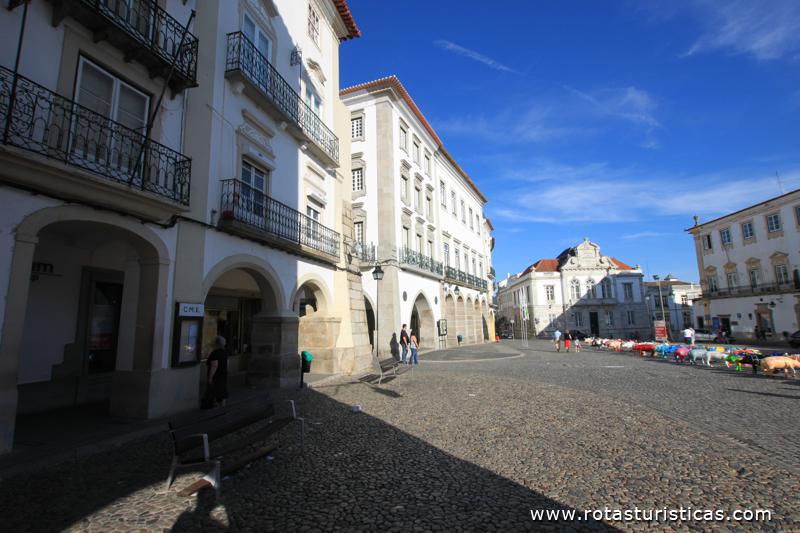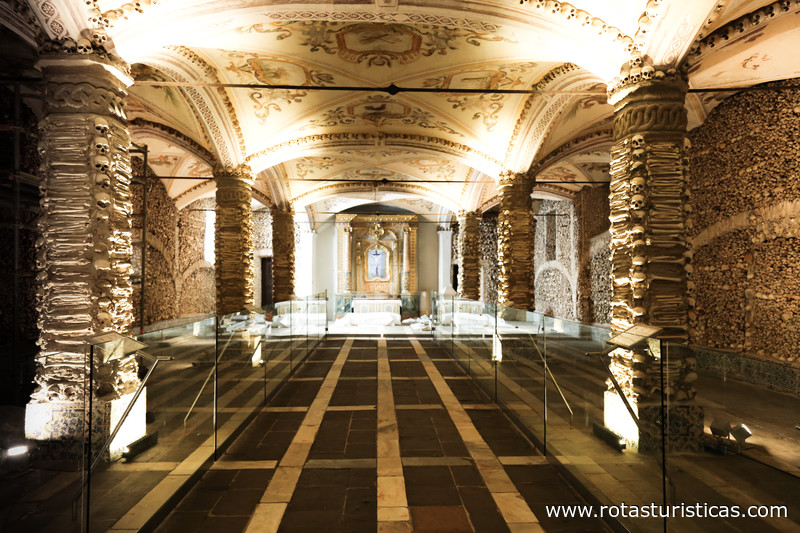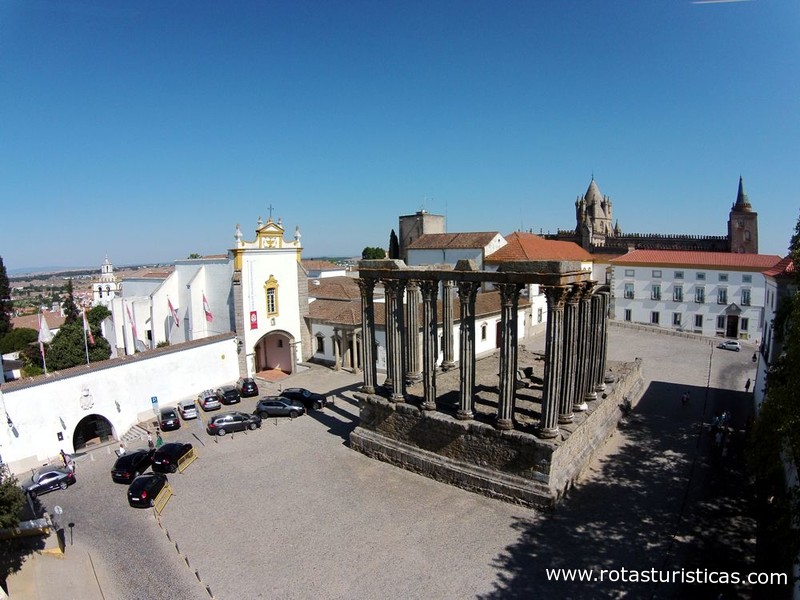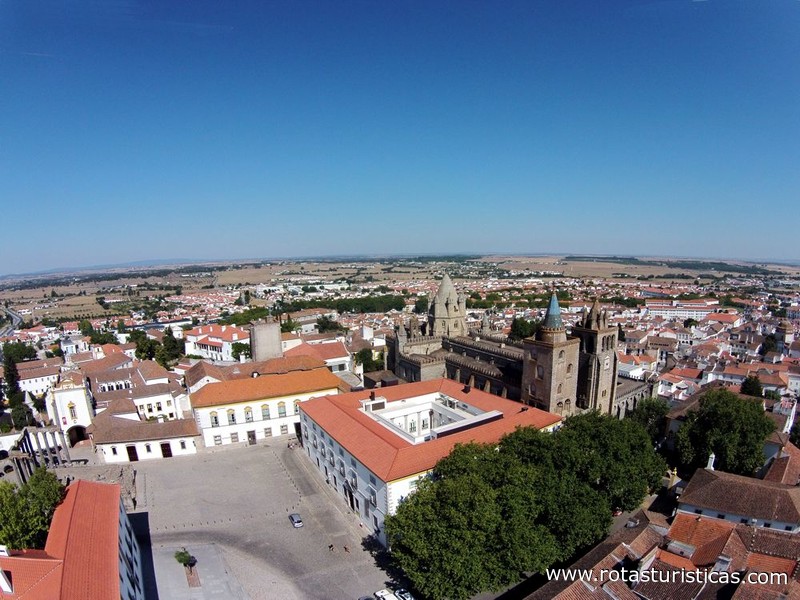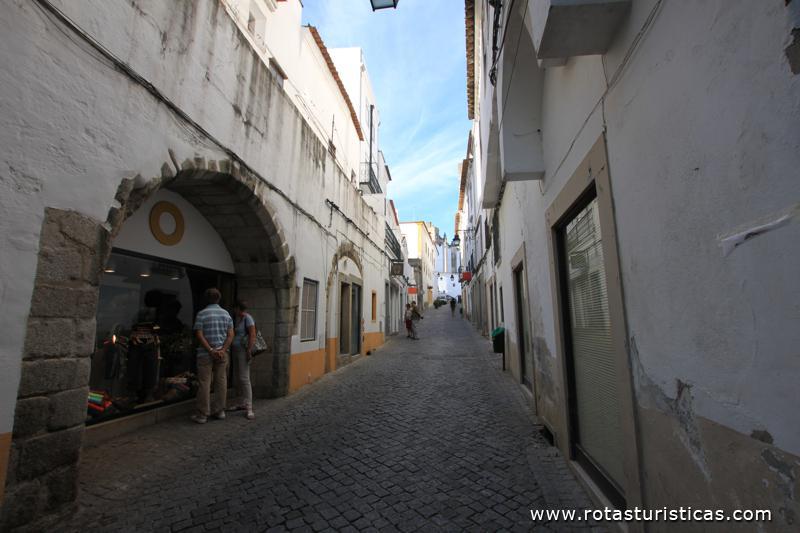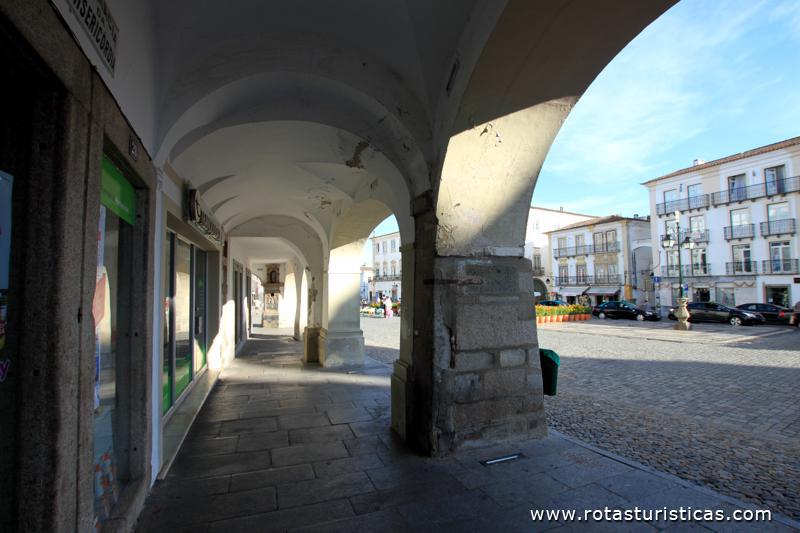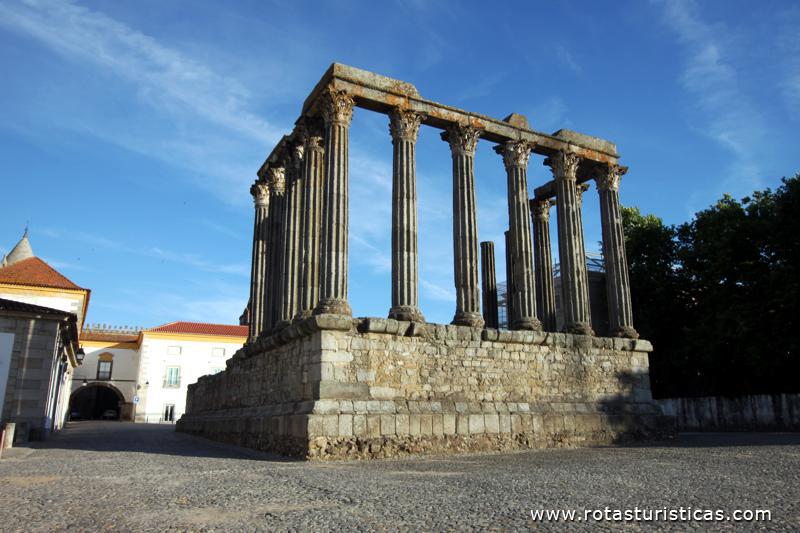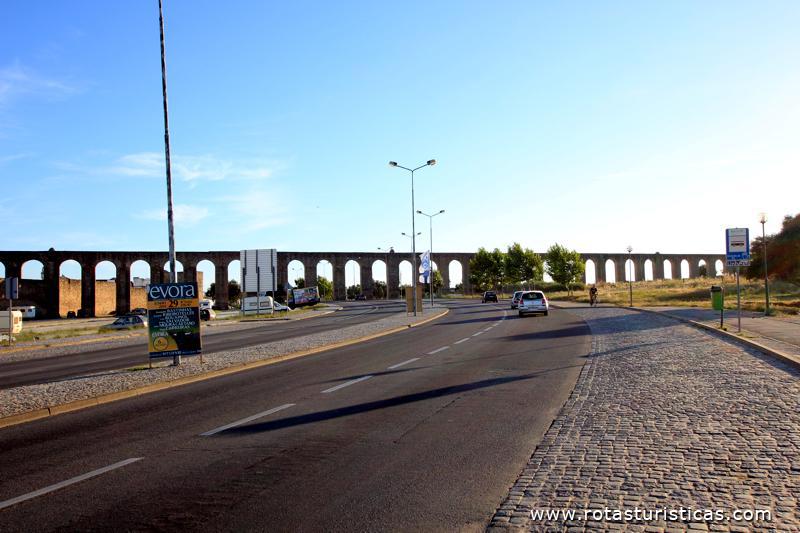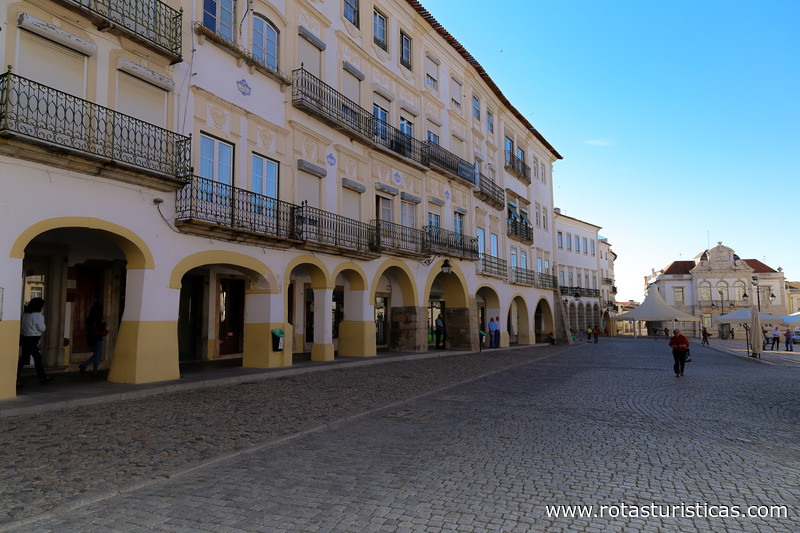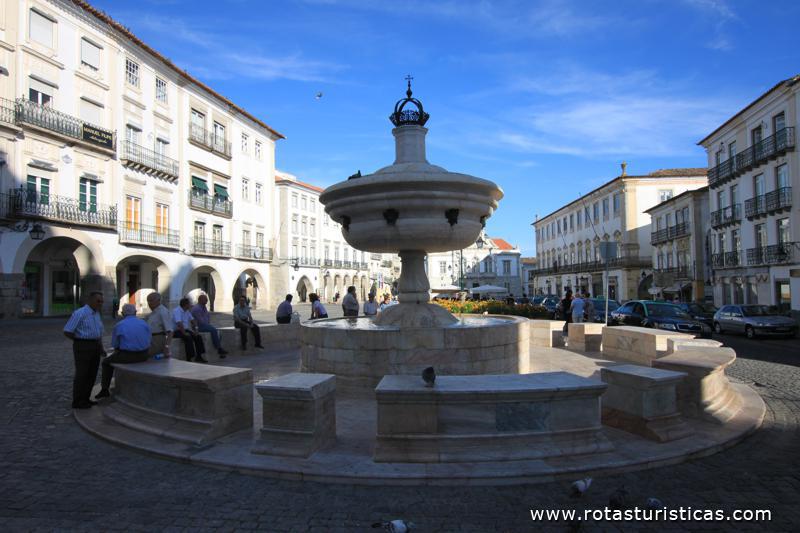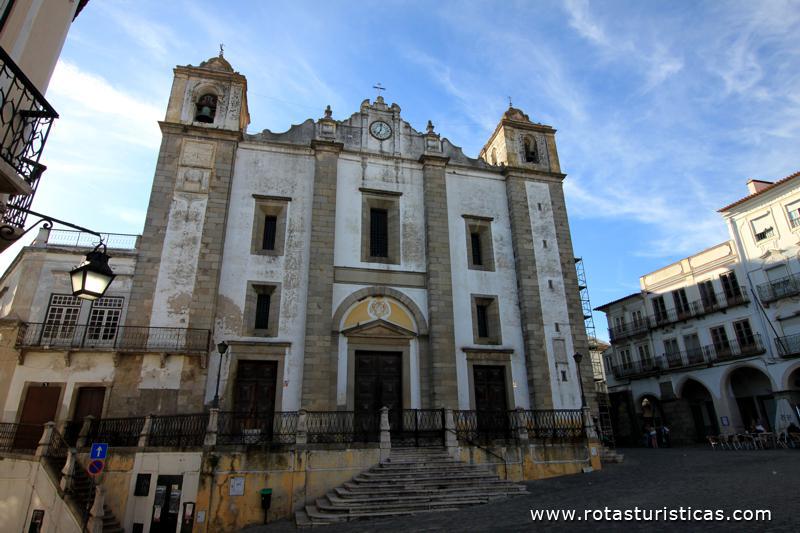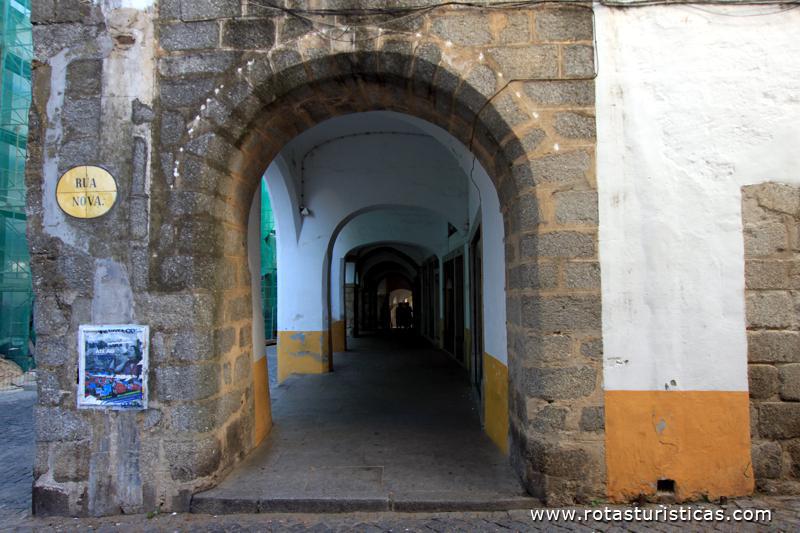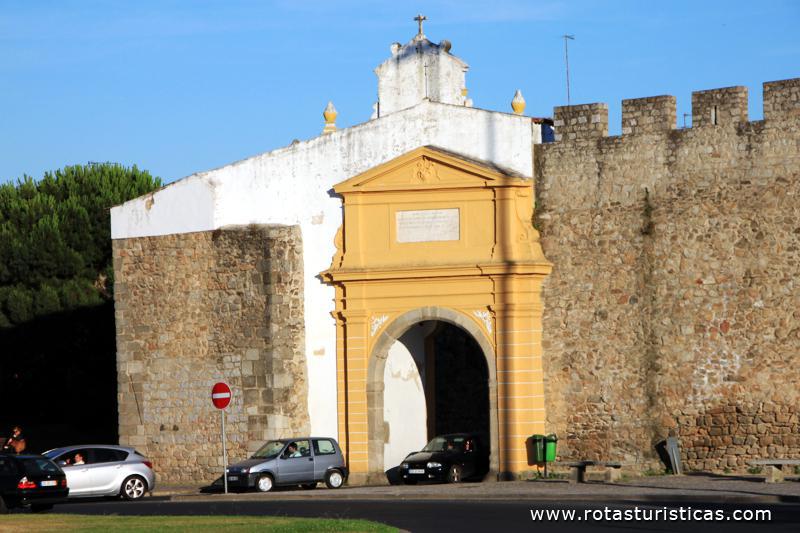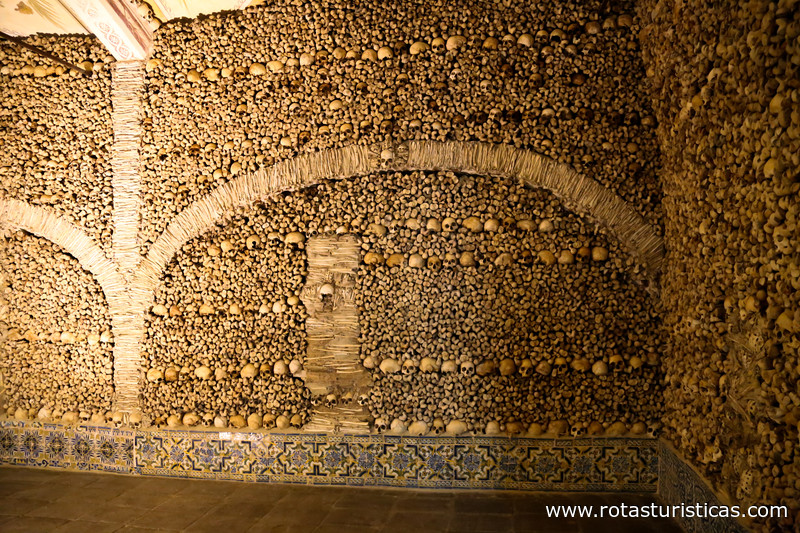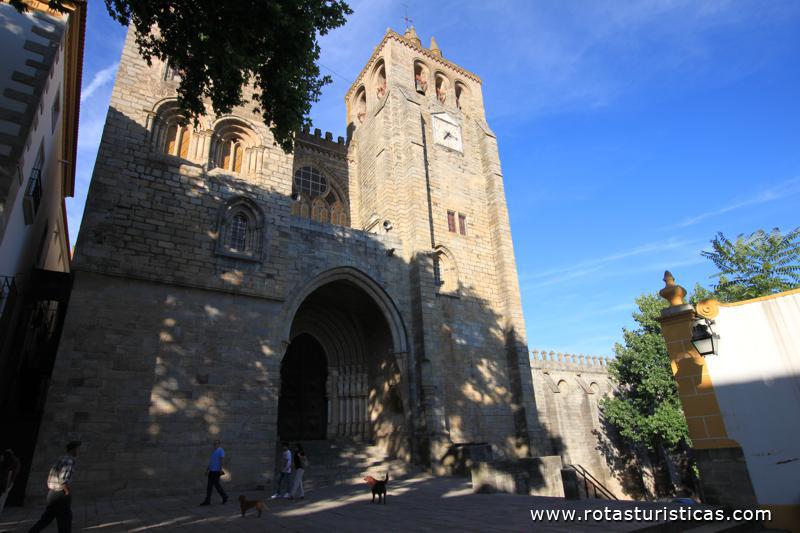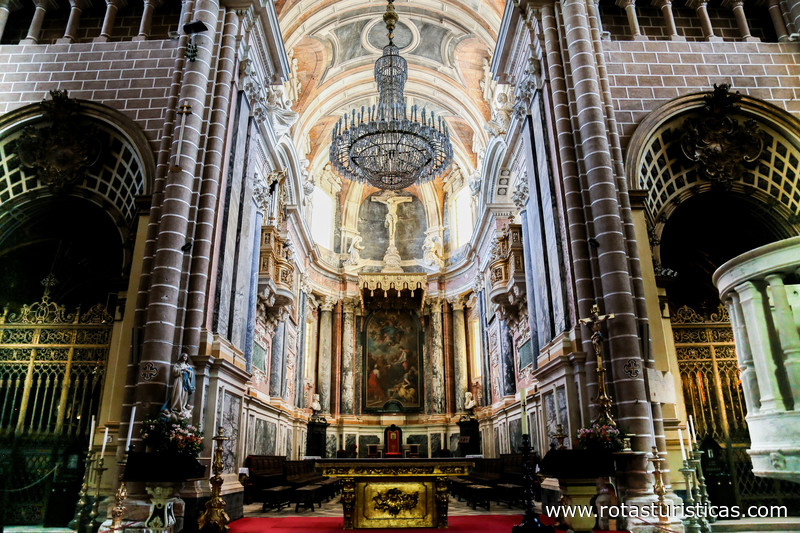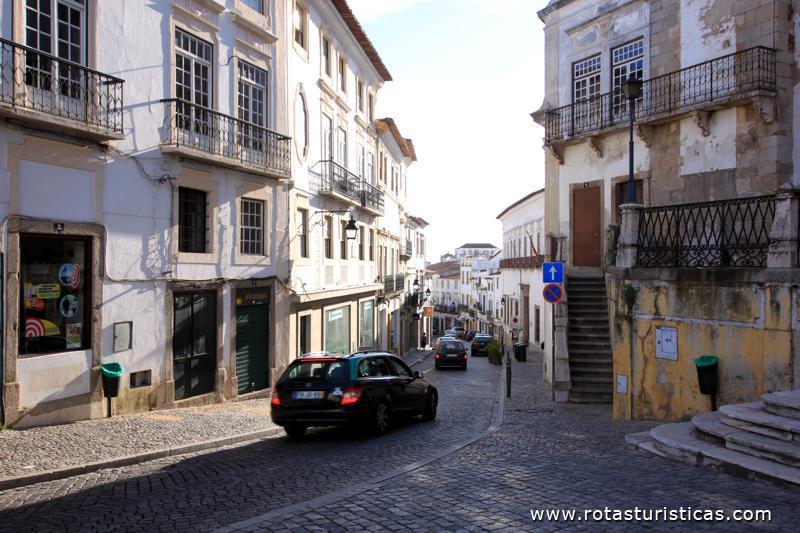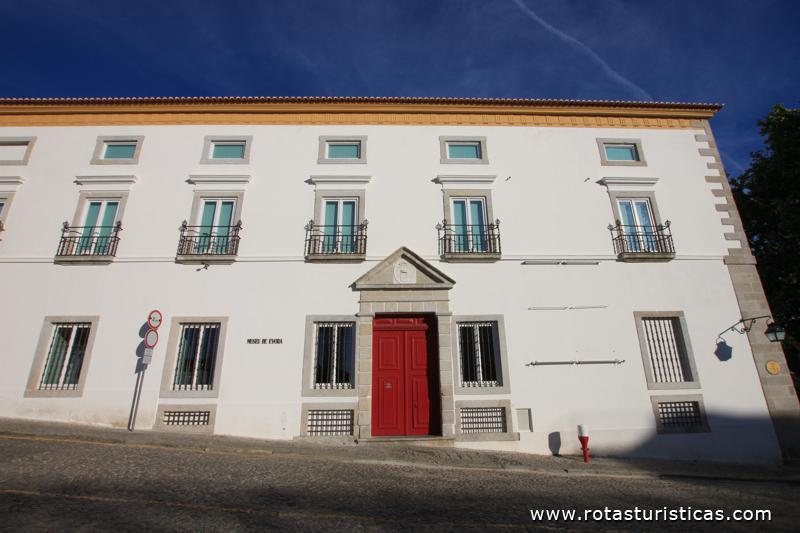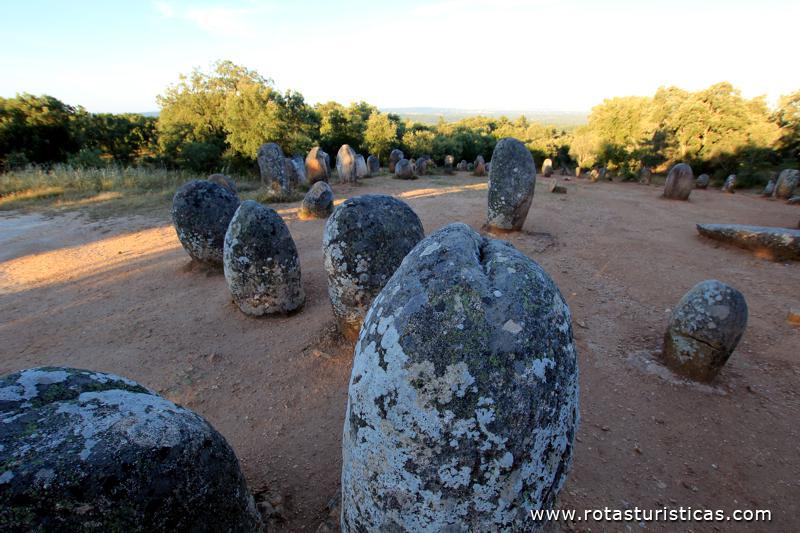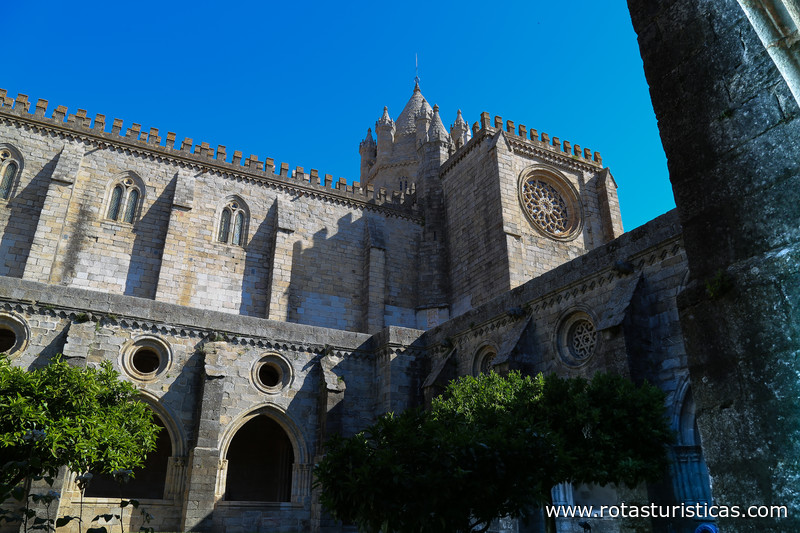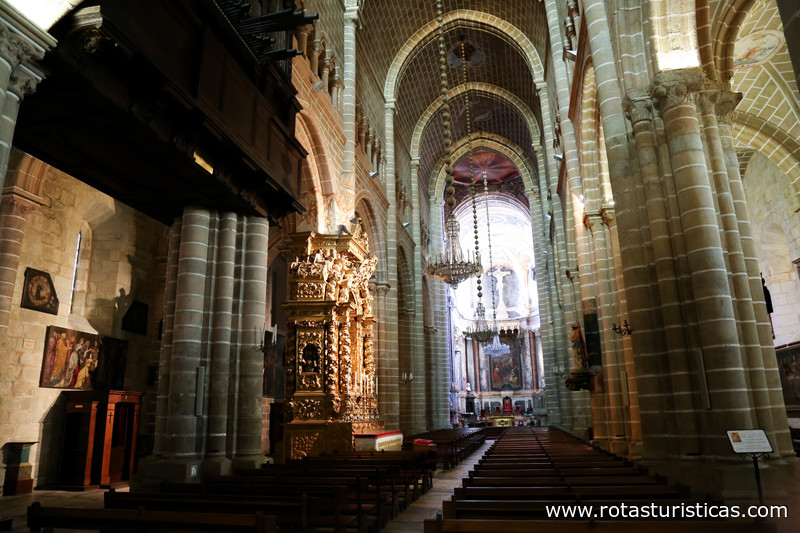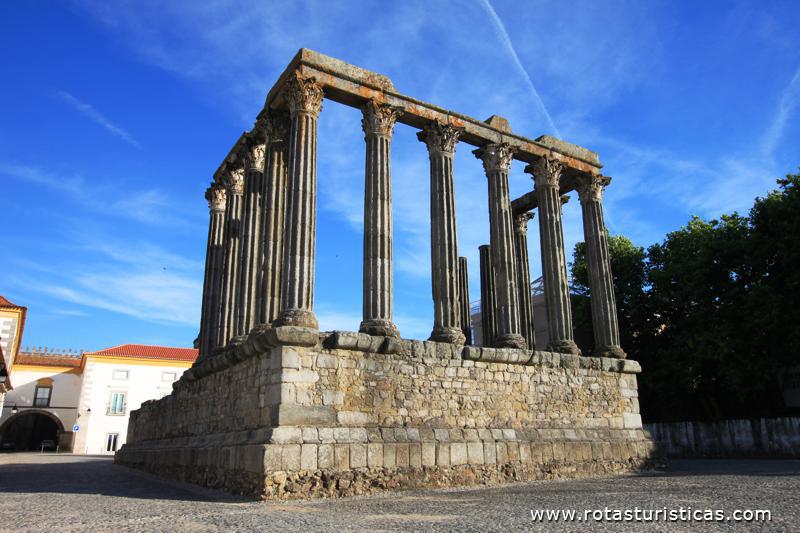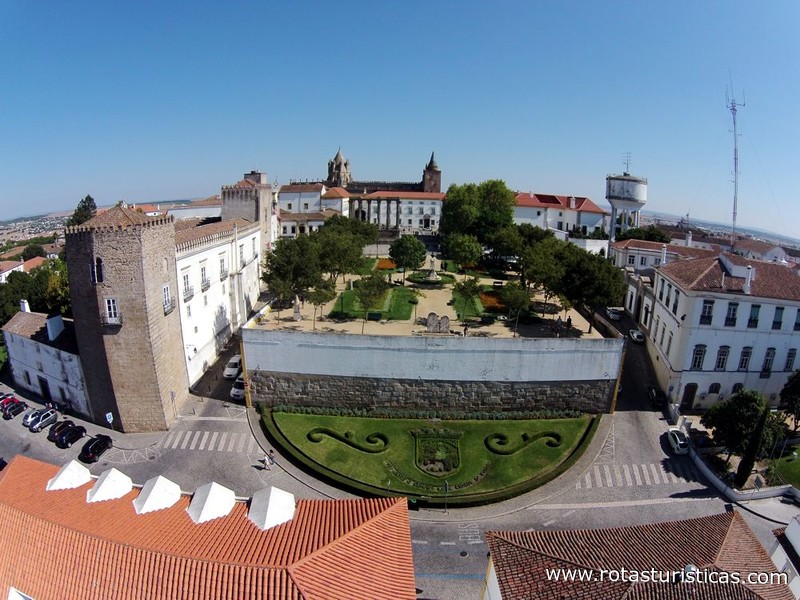Pictures of: Evora
Location map
Airports
Hotels and other Accommodation
What to visit
Where to Eat
World Nomads
The Travel Insurance with the largest coverage

The Travel Insurance with the largest coverage

Evora
Évora is a Portuguese city, capital of the District of Évora, and the region of the Alentejo and sub-region of Central Alentejo. Évora is the only Portuguese city that is a member of the network of the oldest European cities.
It is home to one of the largest municipalities of Portugal, with 1307.08 km² of area and 56 596 inhabitants (2011), subdivided into 12 parishes. The municipality is limited to the north by the municipality of Arraiolos, to the northeast by Estremoz, to the east by the Redondo, to the southeast by Reguengos de Monsaraz, to the south by Portel, to the southwest by Viana do Alentejo and to the west by Montemor-o-Novo. It is seat of district and of old diocese, being ecclesiastical metropolis (Archdiocese of Évora).
Its well-preserved historic center is one of the richest monuments in Portugal, worth the epithet of City-Museum. In 1986, the historic center of the city was declared a World Heritage Site by UNESCO.
It is home to one of the largest municipalities of Portugal, with 1307.08 km² of area and 56 596 inhabitants (2011), subdivided into 12 parishes. The municipality is limited to the north by the municipality of Arraiolos, to the northeast by Estremoz, to the east by the Redondo, to the southeast by Reguengos de Monsaraz, to the south by Portel, to the southwest by Viana do Alentejo and to the west by Montemor-o-Novo. It is seat of district and of old diocese, being ecclesiastical metropolis (Archdiocese of Évora).
Its well-preserved historic center is one of the richest monuments in Portugal, worth the epithet of City-Museum. In 1986, the historic center of the city was declared a World Heritage Site by UNESCO.
Tourism
The historical and artistic heritage preserved today in the city resulted in a good measure of this long stay of the Portuguese monarchy. The monumental complex that these golden ages have given to the city, in harmony with the popular urban fabric, have been at the base of the classification of Évora as a World Cultural Heritage since 1986.
In addition to this unique heritage in the country, the region around Évora has much more to offer the visitor. This is the case of the unique megalithic archaeological landscape, one of the oldest and monumental of Europe, perfectly integrated in the surrounding countryside, of which the megalithic enclosure of the Almendres is the maximum exponent.
Whether in the midst of medieval streets, in the exuberance of palaces, monasteries and churches, in the convivial and tasting spaces of the exquisite palates of traditional cuisine, Évora hides the charm of ancient cities. But on this historical matrix it is once again reassumed as a pole of regional development in the face of the great challenges of the future through the creation of great equipment, the bet in the qualification of products and services of excellence in the area of Tourism, the intense cultural, together with the creation of urban infrastructures that give priority to the well-being of its inhabitants.
For all these reasons the tourist and visitor will find in Évora an exceptional cultural heritage, coexisting, in harmony, with the best standards of quality of life of the country. Motives remain so as not to fail to know and discover, and certainly want to return.
In addition to this unique heritage in the country, the region around Évora has much more to offer the visitor. This is the case of the unique megalithic archaeological landscape, one of the oldest and monumental of Europe, perfectly integrated in the surrounding countryside, of which the megalithic enclosure of the Almendres is the maximum exponent.
Whether in the midst of medieval streets, in the exuberance of palaces, monasteries and churches, in the convivial and tasting spaces of the exquisite palates of traditional cuisine, Évora hides the charm of ancient cities. But on this historical matrix it is once again reassumed as a pole of regional development in the face of the great challenges of the future through the creation of great equipment, the bet in the qualification of products and services of excellence in the area of Tourism, the intense cultural, together with the creation of urban infrastructures that give priority to the well-being of its inhabitants.
For all these reasons the tourist and visitor will find in Évora an exceptional cultural heritage, coexisting, in harmony, with the best standards of quality of life of the country. Motives remain so as not to fail to know and discover, and certainly want to return.
Gastronomy
From the gastronomy of the district of Évora, we can highlight the soup of bacon, the soup of cação, the soups of beldroegas and of tomato.
The meat dishes are the strongest of the district's gastronomy, of which the lamb stew or lamb stew, the head of xara, the "pezinhos" pork of coriander, the chicken pies, the partridge to Montemor, the hare and others dishes of hunting, açordas, migas, sarapatiéis, sausages, hams barred with olive oil, açorda al Alentejana, gazpacho al Alentejana and sargalheta.
In the sweets, we must highlight: the soggy Santa Clara convent, the Arraiolos bacon pastries, the bundles of eggs, the withers of Montemor-o-Novo, the honey cake and the cheeses of Mora's sky, the grenades of Vendas Novas, Moura's delicacy and chocolate pig, the tibornas, loaves of bread, loaf of bread, cottage cheese, Joan's cake, Évora's cheeses, Mother Abadessa's bacon and rolled donuts .
Reference also, for cured cheeses, made from sheep's milk mixed with goat's milk.
The meat dishes are the strongest of the district's gastronomy, of which the lamb stew or lamb stew, the head of xara, the "pezinhos" pork of coriander, the chicken pies, the partridge to Montemor, the hare and others dishes of hunting, açordas, migas, sarapatiéis, sausages, hams barred with olive oil, açorda al Alentejana, gazpacho al Alentejana and sargalheta.
In the sweets, we must highlight: the soggy Santa Clara convent, the Arraiolos bacon pastries, the bundles of eggs, the withers of Montemor-o-Novo, the honey cake and the cheeses of Mora's sky, the grenades of Vendas Novas, Moura's delicacy and chocolate pig, the tibornas, loaves of bread, loaf of bread, cottage cheese, Joan's cake, Évora's cheeses, Mother Abadessa's bacon and rolled donuts .
Reference also, for cured cheeses, made from sheep's milk mixed with goat's milk.
Weather
The climate of the city is Mediterranean, according to the climate classification of Köppen-Geiger, with rains distributed unevenly throughout the year: maximum rainfall occurs in winter, while summers are hot and dry. The annual average temperature is 15.8 ° C, but the monthly temperature variations are large; the highest monthly average is in August (23.3 ° C) and the lowest in January (9.3 ° C). The lowest temperature ever recorded was -5 ° C and the highest 44.5 ° C source: Institute of Meteorology. Snowfall is a rare event. One of the last occurred on January 26, 2006, when it also snowed in Lisbon.
Other tourist destinations in:
Portugal
Portugal
Other world tourist destinations
Why to book with BOOK HOTEL OPORTO
The best prices
Our partnerships with the world´s largest operators offer research on the best market prices.
More options
At Rotas Turisticos you can book the hotel, buy the air ticket, book the transfer from the airport to the hotel and vice versa, book the local excursions, rent the car, take travel insurance and consult the places to visit and where to go.
Holiday Tips & Destinations
Hundreds of holiday destinations with all the options that allow you to easily choose the destination that best suits your dream vacation.
BOOK HOTEL OPORTO
Links

